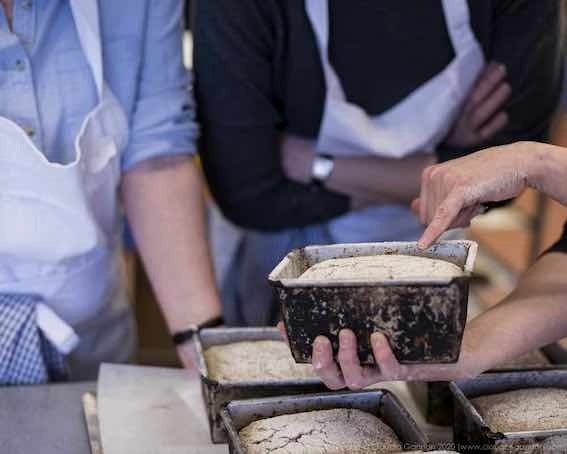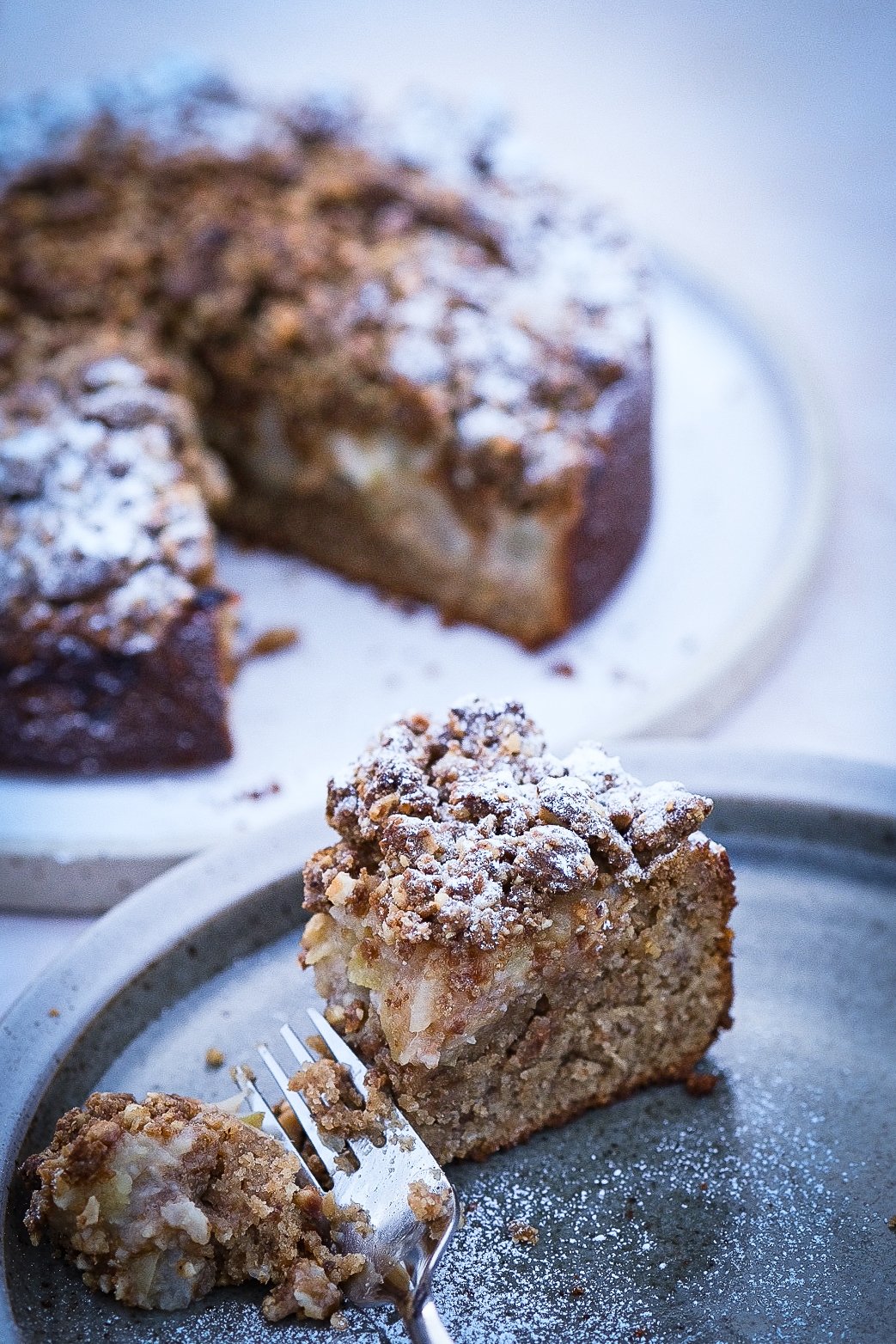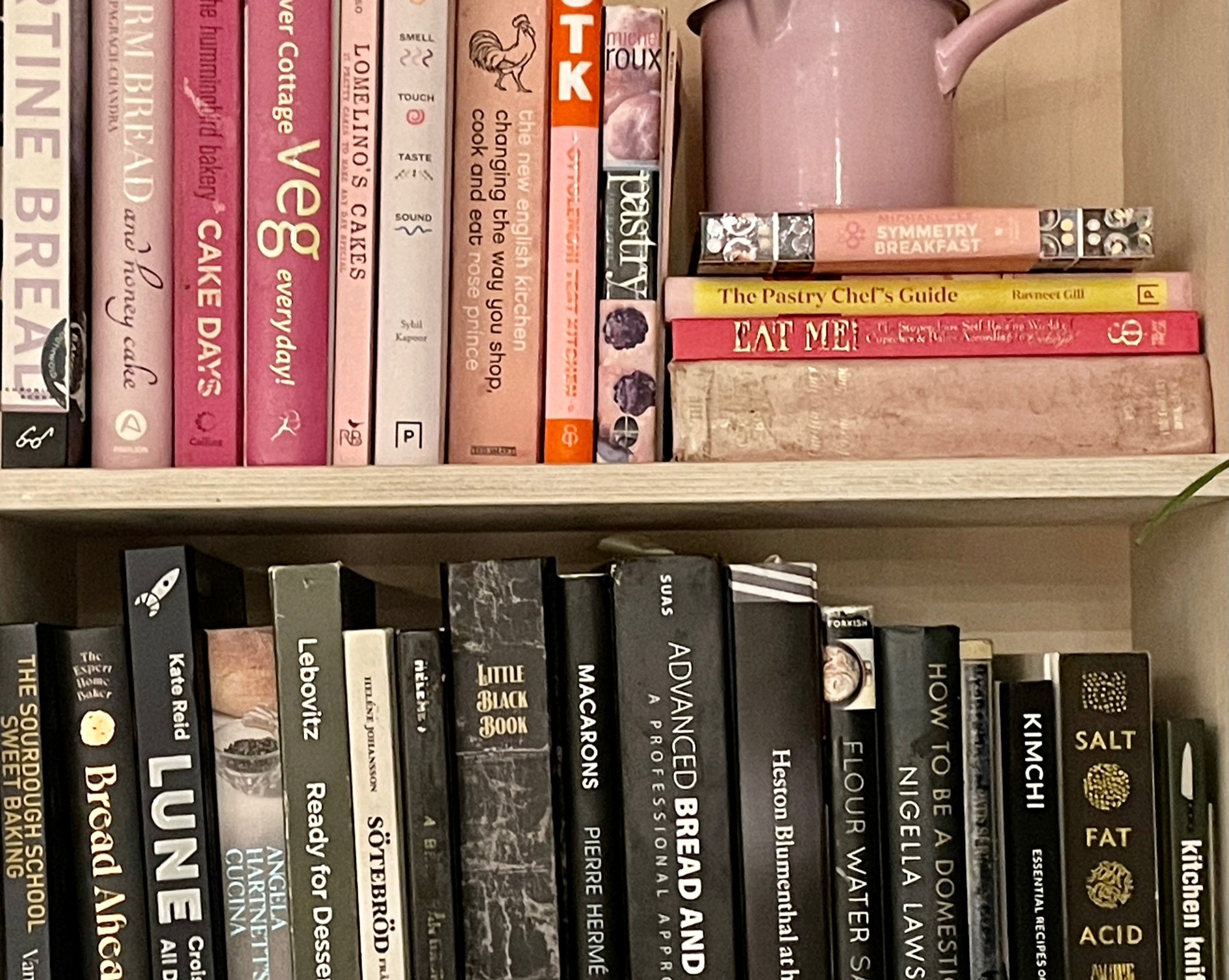Autumn baking: cosy times in the kitchen (and a bakery school to equip…)
It’s pretty busy here at ‘The Next Loaf’ headquarters in Suffolk as I prepare to welcome my first baking school students in December. My inaugural class is, aptly, “Christmas baking’ so we’ll be baking our way through marzipan stollen loaves laden with rum soaked fruit, chocolate orange brioche , delicate biscotti, my mince meat recipe to be used in some very special mince pies , toasted almond amaretti cookies (the perfect last minute gifts) and a sage and onion loaf (ready for your turkey sandwiches!)
Despite the busyness and general excitement of a new venture there’s still time for baking (I’ll rephrase that, there’s always time for baking) so this post features a seasonal apple cake to enjoy with some *hygge moments (*if that word’s new to you, check out this class!)
Going forward I plan to add a bit of structure to my bakery ramblings so you’ll see sections on baking equipment (what’s useful, and what’s not), a deep(ish) dive into specific sub-sets of ingredients (bread flour is first in the spotlight) and a little chat about what baking books I’m currently reading or obsessing over.
Autumn apple cake
As the autumn chill starts to bite there’s nothing better than coming home, putting the kettle on and hunkering down with a cuppa and something sweet to fill a gap.This spiced apple cake is delicious with morning coffee, as an afternoon pick-me-up or warmed gently and served with a dollop of double cream for the perfect pud. Plus, it includes one of your five a day! Toasted hazelnuts are delicious but can be a bit pricey so to keep the cost down I’m substituting half the nuts for coarsely ground toasted almonds.
Serves 6.
Prep time: 30 minutes
Bake 35-45 mins
Streusel layer
Wholemeal flour (I used Hodemedods Einkorn) - 90g
Light brown sugar - 50g
*Sweet spice mix* - 1 teaspoon
Baking powder - ¼ tsp
Unsalted butter, melted - 60g
Hazelnuts, toasted then ground - 80
Fine sea salt - 1/8th teaspoon
Fruit layer
Tasty eating apples (whatever tastes good) - 4 apples
Cake layer
Whole eggs - 2
Light brown sugar - 90g
Wholemeal flour(I used Hodemedods Einkorn) - 60g
Baking powder - 3/4 tsp
*Sweet spice* mix - 2 teaspoons
Hazelnuts, toasted then ground - 120g
Almonds, toasted and ground - 120g
Sour cream - 180g
*Sweet spice mix*
Ground cinnamon - 2 teaspoon
Ground ginger - 1 teaspoon
Ground clove - ¼ teaspoon (approx. 4 cloves)
Ground nutmeg - 1 teaspoon
Method:
Make the streusel, apple mix and toast your nuts (!) a couple of hours before you start the cake.
To make the streusel combine all the ingredients and press the mix together. Wrap in paper and chill in the fridge for a couple of hours before using.
Chop the apples into 1cm cubes (leave the skin on) and place in a lidded pan. Gently cook over a low heat until the apples soften slightly (approximately 5 minutes) then leave to cool.
Grind the spices together to make your sweet spice mix. There will be a little left-over - perfect sprinkled over your porridge.
When you're ready to make the cake preheat the oven to 175 degrees C.
Grease and line a 8 inch loose bottom cake tin.
Beat the eggs and sugar together in your stand mixer until pale and thick. In a separate bowl combine the toasted gound nuts, flour, baking powder, salt and spice mix. Fold into the egg mix in three additions. Fold in the sour cream until mixed thoroughly.
Place the cake mix in the tin and level. Spoon the apple on top then crumble the streusel over the surface in irregular chunks- pushing some of the streusel mix down through the apple into the cake mix so you get lots of streusel texture all the way through the cake.
Bake the cake for 30-45 minutes until a knife inserted in the cake layer comes out clean. You may need to cover the cake towards the end of the bake to stop it getting too dark. Dust with icing sugar to serve.
This cake will keep for 3 days ambient and up to a week in your fridge. It also freezes well.
All the gear - what’s useful, and what’s not.
Loose-bottom cake tins
This month's recipe, a moist apple cake, is too delicate to just turn out so its best baked in a loose bottomed tin. My favourite type are non- stick and generically called ‘springform’. The base interlocks with a removable metal ring that expands or tightens as required. After baking let the cake cool slightly in the tin then gently loosen the clip on the side of the tin to release the metal ring around the cake. A word of caution, learnt through experience, before ‘springing’ your cake free, gently run a knife around the top edge of the cake as sticky, caramelised edges sometimes become attached to the metal!
Ingredient know-how
Baking ingredients can be confusing. Take sugar for example - it comes in brown, white, golden, light, dark, icing, demerara, muscovado……. I could go on.
Bakers are usually hoping for a specific outcome so it’s important to consider the qualities each ingredient brings to the (baking) party. I’m going to focus on some of the basic ingredients you might have in your cupboard or be reaching for in the supermarket so you can choose with more knowledge. One of the things I love about baking is that once you have understanding and knowledge THEN you can start to get sassy and bend the rules!
*a caveat here would be that sometimes mistakes,can result in new ideas. I remember a weary bakery shift where I melted butter in the microwave, intending to add it to a cake mix. The bowl of (now re-solidified) butter was found many hours later - long after the cake went in, and came out of, the oven. Despite this oversight the cake was deemed a success (and dairy free into the bargain). A new recipe was born….
Bread flour.
I’m kicking off this new section talking about what makes ‘bread flour’ strong- a subject close to my heart.
Why is bread flour described as "‘strong’?
Bread dough requires both elasticity and strength to be able to support the gas bubbles created by yeast. The two proteins that gives bread flour the ability to create these properties are called called glutenin (usually shortened to gluten, this gives strength) and gliadin (this gives elasticity). Higher protein in a grain makes a ‘stronger’ flour that contains more gluten. The high protein level in bread flour is what makes bread ‘chewy’, a quality we don’t want in a sponge cake or muffin. In terms of labelling, English bread flour is usually called ‘strong’ or ‘extra strong’, in France they use the ‘T’ system ( the larger the ‘T’ number the more of the whole grain is present in the flour) and Italian flour is categorised by the number of ‘0’s. You’ll now realise that not all flours are created equal so it’s important to choose the right one for the right job! A final fail safe way of checking if your flour is good for bread making is to check the nutritional analysis panel on the side of every bag. You’re looking for a protein level of at least 11 grams per 100g of flour rising to 15 grams per 100g for those super stretchy strong doughs like pizza and pasta.
How should I store flour?
Flour should be stored in a cool, dry place. White (sifted) flour is more stable than wholemeal flour because it only contains the inert starch from the interior of the grain (more on this later). As the name suggests, wholemeal flour contains all the separate components of the grain - bran, germ and starch. Because the germ is packed with heat sensitive oils, vitamins and minerals it should be stored in a cool place for a limited amount of time - if stored in a warm kitchen make sure its no longer than 3 months as the fats quickly become rancid making the flour taste bitter. To extend the shelf life of wholemeal flour it can be frozen.
What’s the difference between white and wholemeal flour bread flour?
Wholemeal flour (sometimes referred to as wholegrain) contains everything that the grain has to offer - it’s ‘whole’! This includes the bran (the fibrous husk on the outside of the grain), the germ (a mineral and oil rich foodstore for the grain seed) and the endosperm (high in protein and rich in starch). Wholemeal flour is better for us: fact.
White flour is made by the miller sifting away differing amounts of the bran and germ (referred to as the extraction rate) to just leave the starchy inside of the grain (the endosperm). The closer the flour is to the centre of the grain the whiter, less nutritious and ‘softer’ it is (ie. less protein). Higher protein, creamier colour flour is found towards the edges of the grain, closer to the bran layer. White flour is largely inert so its shelf life is much longer though you should still follow the date on the side of the bag.
If you have any requests for future ingredient deep-dives and other baking conundrums let me know and I’ll do my best to shed some light…
What I’m reading this month
I love my cookbooks - they’re like old friends, always there for me when I need them. The more food-splattered the cover and thumbed the pages the more I know I’m in a safe space.
However, much as I love to write (and read) new recipes you can’t beat a classic for inspiration from the past and sound instruction for the present, especially when it comes to a craft as old as bread. Elizabeth David’s “English bread and yeast cookery’, first published in 1978, has pride of place on my bookshelf. https://www.amazon.co.uk/English-Bread-Yeast-Cookery-Library/dp/0140299742
One final word…..have you signed up for my newsletter? It’ll keep you up to date on new baking classes and let you know every time I post a new recipe here..
See you soon!





